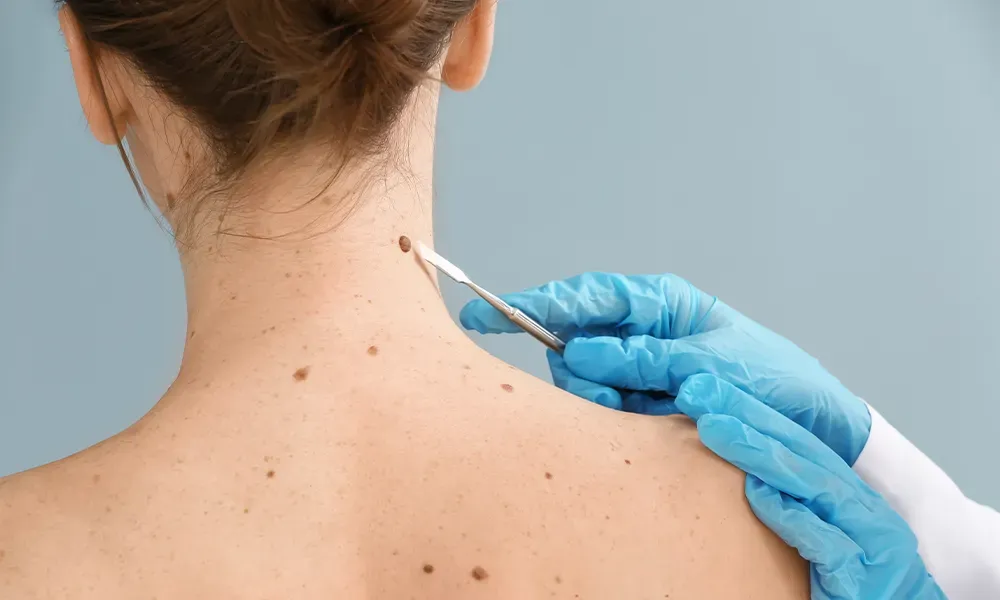
Skin tags are small, soft growths that often appear on the surface of the skin. They’re typically harmless and painless, yet they can be annoying, especially when they appear in visible areas or cause discomfort. While they usually develop in areas where skin rubs against skin or clothing—like the neck, underarms, or eyelids—they can appear anywhere on the body. If you’re looking for Skin Tag Removal in Dubai, or just curious about what causes them and how to remove them, this guide will provide you with all the essential information to understand and manage skin tags effectively.

What Are Skin Tags?
Skin tags, also known as acrochordons, are small, benign growths made of collagen fibers, blood vessels, and skin cells. These growths are typically flesh-colored or slightly darker and vary in size from a few millimeters to more than a centimeter in diameter. The causes of skin tags are not entirely understood, but several factors may contribute to their development. These include genetics, friction from clothing or skin-to-skin contact, age, and even hormonal changes.
Skin tags are more common as people age, with individuals over the age of 50 being more prone to developing them. They are also seen in people who are overweight, as the increased skin folds may cause more friction, leading to skin tag formation. Though they’re more of a cosmetic concern for most people, some skin tags can become irritated if they are frequently rubbed by clothing, jewelry, or even during shaving.
How to Remove Skin Tags Safely
While skin tags don’t typically require treatment, there are instances where you might want to have them removed. Whether due to cosmetic reasons or because they’ve become irritated, the removal of skin tags is usually quick and straightforward. Here are some common methods used to remove them safely:
-
Cryotherapy (Freezing): Cryotherapy involves freezing the skin tag using liquid nitrogen. This method effectively destroys the tissue, causing the skin tag to fall off over time. It’s typically done by a medical professional but can be performed at home using over-the-counter products.
-
Ligation: Ligation involves cutting off the blood supply to the skin tag. A small band is tied around the base of the skin tag, which eventually causes it to fall off within a few days. This method may require a healthcare provider to perform it for optimal results.
-
Excision: In this method, the skin tag is simply cut off with a surgical scalpel. Excision is often done for larger skin tags or those that are more difficult to remove with other methods. This should always be performed by a medical professional to reduce the risk of infection and scarring.
-
Cauterization: Cauterization involves burning the skin tag off using an electrical current. This process not only removes the skin tag but also cauterizes the wound, helping to prevent infection.
-
Home Remedies: There are several at-home treatments people often try to remove skin tags, such as applying apple cider vinegar, tea tree oil, or using over-the-counter removal creams. However, these methods can sometimes be less effective or lead to irritation. It’s important to be cautious and consult a professional if you’re unsure about using these remedies.
When Should You Seek Professional Help?
Although many skin tags can be removed at home, it’s always advisable to consult with a dermatologist or healthcare professional before attempting removal, especially if the tag is in a sensitive area like the eyelid or if you have a large or irregularly shaped skin tag. A medical professional can confirm that the growth is indeed a skin tag and not something more serious, such as a mole or other type of skin lesion.
Additionally, if a skin tag is bleeding, inflamed, or showing signs of infection, it’s important to seek medical advice immediately. This could indicate a more serious issue, and professional treatment will be necessary to avoid complications.
Prevention of Skin Tags
While there’s no surefire way to prevent skin tags, there are a few steps you can take to reduce your risk of developing them. Maintaining a healthy weight can help minimize skin friction, and wearing loose, breathable clothing can reduce irritation in areas where skin tags are likely to form. Additionally, good skincare routines that keep the skin clean and dry can also help in minimizing the development of these growths.

Conclusion
Skin Tag Removal Dubai are a common, harmless occurrence that many people experience. Whether you’re simply looking to understand what causes them, or are actively seeking skin tag removal in Dubai, knowing your options and understanding the removal process is key to making an informed decision. If you’re dealing with skin tags, there’s no need to worry—they are easily treatable with the right approach. Just remember to consult with a professional if you have concerns or questions about your skin health.